Additional Houses forming the Heritage of Tasmania.
[Previous Post: National Trust Tasmanian Heritage Register 7 ...
Table of Contents
Addenda - Other Outstanding Tasmanian Historic Homes
Westella, Elizabeth St, Hobart, TAS, Australia
Brickendon Estate, Longford, TAS, Australia
Woolmers, Longford, TAS, Australia
Mountford Longford, TAS, Australia
in Federation StylePenghana, Queenstown, TAS, Australia
Home Hill, Devonport, TAS, Australia
- Fairlawn, 136-138 Elphin Rd, East Launceston, TAS, Australia
- Winmarleigh, 55-57 Morris Av, Taroona, TAS, Australia
- Arcoona, East Barrack St, Deloraine, TAS, Australia
- Ormiston, Strahan, TAS, Australia
See also:
1. Westella, 181 Elizabeth St, Hobart, TAS, Australia
|
- The building owes its importance also to its original owner, Henry Hopkins, pioneering figure in the development of Hobart's commercial and religious functions.
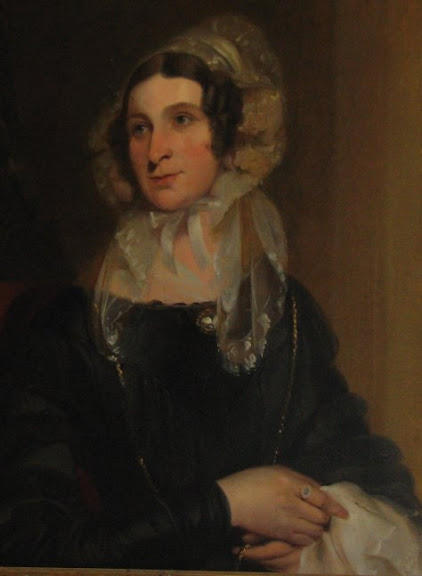 |
| Sarah Hopkins |
"Henry Hopkins had begun life in Hobart Town sharing a two-room house with an Earth floor with his wife, Sarah. However, after ten years of exporting wool, he was wealthy enough to build "Westella House", then the biggest house in Hobart Town, and still standing today. It had 48 rooms and the dining room could seat 60 guests." - Wikipedia
Sarah Hopkins wrote at the time:
- 'We are about to remove in a few days, to a new and spacious habitation," and it was an apt description of the large and imposing mansion, on a hill overlooking the town - the same hill in fact, where Hopkins and Mather had first started their business.
- Then it was called Potter's Hill, but as Hopkins' house now dominated it, the area came to be known as 'Hopkins' Hill'.
The architect of the new house was Henry Chapman, and the builder was his father Isaac Chapman, who had come to Van Diemen's Land with the Hopkins in the Heroine.
- According to a later report he was told to excel himself both in solidity and size and to rear in the sky an edifice which would put the vice-regal residence in the shade, and eclipse any private residence that hod been erected in the colony up to that time.
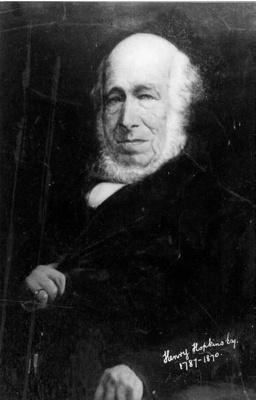
Hopkins, Henry - lantern slide; P_GSL200
- He campaigned heavily to abolish transportation, which had already been abolished in New South Wales.
- This placed a heavier burden on Van Diemen's Land, which by 1830 was Britain's only external gaol.
- He was one of the founders of congregationalism in Hobart Town and built a chapel at his own expense in Collins Street.
- He also contributed to building funds for the still existent St. David's Anglican Cathedral, as well as other Presbyterian and Wesleyanchurches, and started scholarships for theological students.[49] - Wikipedia
Westella is "a substantive three storey Grecian Villa. Stone with iron hip roof behind parapet. Large Ionic portico.
- Double entry doors with raised geometrical ornament and fine fanlight. Above portico, central bay sits proud with bracketed cornice over twelve window and terminating in balustered parapet.
- Finestone quoins, strings and window surrounds. Two, three storey part brick/stone wings at rear with some round head windows. Fine iron railing. Stone pillars and plinth." - Australian Heritage Database
would not have been difficult to eclipse, but the builder certainly carried out his instructions, and the True Colonist wrote that 'of all the buildings in Hobart Town Mr. Hopkins' house in Elizabeth Street will be the finest."
|
|
Above the staircase was a many-paned skylight, and a second staircase was for the use of servants, who slept in the south wing.
- There were eighteen more main rooms and two two-storey wings behind the main building:
- when the house was later used as a hostel, it contained forty-five bedrooms.
- The house is now penned in by other buildings, but in 1835 looked more imposing: the street was one to two metres wider and a metre lower, so the flight of stairs and portico in front were more impressive, while there were carriage entrances and exits on both sides of the building.
- (when) the Governor ordered that the death of William IV and the accession of Queen Victoria be proclaimed
- from Westrella's steps, in the absence of a Town Hall, and later
- the birth of the Prince of Wales was similarly announced from Westrella's steps.
- Hopkins was 'most hospitable and must have maintained a large establishment,
- while the Clyde Company Papers have a letter from a Mrs. Williams to a Mrs. Reid, to the effect that
- 'Mrs. Hopkins hopes when you come to Town you will stay at her house - a grand one'.
|
| ||||
|
|
 |
| Henry Hopkins at Summerhome |
- He is described several times as 'un-ostentatious', but the house and more particularly the instructions to the builder {if genuine) do not seem un-ostentatious, and it is seen in its building the determination of Hopkins, ·
- If Hopkins wished to impress the local inhabitants, this was one of the best ways. Dixon, writing in 1839, described Hobart society:
'Money is the grand topic of conversation, and to appear wealthy is their greatest ambition. - 'In no part of the world are riches more honoured than in Van Diemen's Land.
- 'It is no matter how you became possessed of them, what is your history, or what your propensities'.
- Read more: HENRY HOPKINS AND GEORGE CLARKE: TWO TASMANIAN NONCONFORMISTS: Thesis by ALISON ALEXANDER, B.A.Hons.
THE GOVERNMENT BUYS WESTELLA
Advocate (Burnie, Tas. : 1890 - 1954) Wed 7 Mar 1945 HOBART, Tuesday.Now used as a hostel for young women, Westella, well-known property in Elizabeth street, Hobart, has been purchased by the State Government.
- Westella has been conducted as a hostel for young women by thc Country Women's Association for a few years, and has been used mainly for women engaged in war work.
- The building will continue as a hostel conducted by the C.W.A. under certain conditions.
- The Government has been paying the rent since the establishment of the hostel, and it was considered a more economic proposition to purchase the property.
- Tasmanian Heritage Register Place ID #109
- Back to Contents
2. Brickendon and Outbuildings, RA 236 Wellington St, Longford, TAS, Australia
- Listed on the Register of the National Estate
- Brickendon Estate was included in the National Heritage List on 23 November 2007.
 |
| Brickendon |
Brickendon Estate is a farm estate located in Longford, Tasmania. It is one of the two main ancestral homes (with Woolmers) of the Archer family, prominent local pioneers and politicians.

- Founded in 1824, it consists of a village and manor house, as well as 465ha working farm.[1]
- The main manor was built in 1829-1830 in a Georgian style.[2]
- It has been World Heritage listed with sister property Woolmers Estate since 2010,[3] and it is also listed on theTasmanian Heritage Register[2] and the Australian National Heritage List since 2007.[4][5]
Located in Northern Tasmania, Brickendon Estate is a remarkable example of a farming property dating from the 1820s.
- The property has been continuously farmed by the descendents of the Archer family for six generations, who have ensured that the convict built farm complex, Georgian country house and formal garden remain largely intact.
- The estate is of outstanding national significance for its association with the convict assignment system and as a designed landscape which provides a record of continuous farming practice.
- The historic working farm of Brickendon, situated on the outskirts of the town of Longford - 20 kilometres from Launceston - is open to the public from Tuesdays to Sundays.
|
| ||||
|
|
- You have a rare chance to see the convict-built Gothic chapel, Dutch barns, chicken house, blacksmith shop and tool shed. There is a four hectare (10 acre) historic garden for you to explore.
- Close to the Georgian homestead there are garden beds featuring soft plantings of roses and perennials to complement the house's historic façade. Walk along the paths to outlying features including the orchard and original shrubberies. You can experience the 'garden rooms', each with their own mood and ambience.
|
|
The Brickendon main residence is a two-storey stuccoed brick old Colonial Georgian home with cellars.
- Stepped wings of two-storeys at the side and rear form a large courtyard, which is paved with stones. Windows are twelve or six panes, with shutters; the building has six panelled doors, and a front door with curved fieldings, which is also shuttered.
- It has an iron trellis portico, designed by William Archer Jr and manufactured in London in 1857 for 70 pounds. The building has hipped roofs of slate and early patent iron tiles.
- Original 1829-30 residence destroyed by fire and rebuilt in 1881. Outbuildings erected 1820-60 are remarkably intact.
 Brickendon Outbuildings
Brickendon Outbuildings
- The stable is a brick building of two-storeys in Old Colonial Georgian style, with a centre gable, fanlight doors and a hipped roof.
- There is a large group of timber barns in vernacular style, including a two-storey barn on carved stone piers to prevent vermin from entering. Pitched iron roofs have sloped gables. Outbuildings also include workers' cottages in stone and brick.
- The small family chapel is built of brick in the Victorian Rustic Gothic style with timber shingled roof and bellcote.
- Part of the property was used in the filming of 'My Brilliant Career' to convey the lifestyle of the early landed gentry of eastern Australia. The garden is significant in its own right.
|
|
- Brickendon is significant for its association with the prominant local settlers, the Archers, who owned a string of properties in the area, of which Woolmers, Panshanger, Northbury, Fairfield, Cheshunt, Woodside, Palmerston and Saundridge are entered on the Register of the National estate (criterion H.1)
Brickendon Gardens
The gardens include one of the most unusual collections of trees in a private garden in Australia. Trees of these species and age are found together nowhere else in Tasmania, apart from the Royal Botanical Gardens. Majestic Oaks, Elms, Pines, Cedars, Yews and Lindens encircle the gardens providing a private world for the Archers, but is open for all to enjoy.- The first William Archer laid out the garden and shrubberies in the 1830's.
- He designed them in the latest English fashion, the "picturesque", which created a more natural looking landscape than the manicured lawns and rigid pattern of beds of the previous periods.
- Sweeping carriage drives, hawthorn lined driveways, wilderness shrubberies, extensive rose and perennial plantings, all surround the gracious Georgian Homestead - still home to the 5th, 6th and 7th generations of the Archer family.
 |  |
- The feature tree however comes from Australia - the amazing Bunya Bunya stands proud and strong overlooking the beautiful parkland setting of the extensive gardens.
- The gardens include many "rooms" featuring an amazing variety of annuals, perennials, flowering shrubs and trees and a wonderful collection of cool climate specialty plants.
- During the months of June-August the gardens are dormant - ready to burst forth in blossoms for the Spring. November to April are the peak months with an ongoing show of colour and perfumes.
- Tasmanian Heritage Register Place ID #5180
- Back to Contents
3. Woolmers Estate, Woolmers Lane, Longford, TAS, Australia
Part of Tasmania's World Heritage Convict Sites, Woolmers Estate is Australia's finest example of a pioneer farm of the early 1800s.- The Estate has a collection of buildings, antique cars, photographs, art and furniture.
- It displays a remarkable journey from the first Thomas Archer, who settled the property in 1817, to the present day.
- For six generations Thomas Archer family descendants lived on the estate. They were known never to sell their possessions, thus creating a complete time capsule and a remarkable accidental curation of heritage treasures.
 |
| Woolmers Estate |
- The property covers a total of just over 82 hectares, which includes the 15.63 ha (34 acre) portion known as Homestead Area plus an additional 66.41 ha, both portions being part of a 2,905 acre grant to Thomas Archer.
Woolmers Main House (original building):
Constructed by convicts in 1819-21 it is a large brick-nog lined building with a hipped roof and flagged verandahs.- The rooms have a high degree of integrity with original lathe and plaster ceilings and lining boards and original timber floors. Ceilings throughout the house generally are reinforced with 1890s battens.
- While all of the collections in the house relate to the Archer family’s occupancy of the house from the 1820s on, the fittings and most of the furniture are original. The wallpapers and carpets in the bedrooms, dressing room and sitting room are from the 1930s.
- Beneath the house are four cellar rooms, three with brick lined wells and one with a large trapdoor in the ceiling providing access into the drawing room. Six attic bedrooms with original timber ceilings and lining boards papered with c1850s wall papers are accessed by narrow staircases at the northern and southern ends. Iron window bars are in situ on some of the attic windows.
Designed by William Archer and built in 1843 in part using convict labour, the extension comprised an Italianate addition with drawing and dining rooms on either side of a large front hall, and Italianate porch below a small tower with a bedroom above.
- The kitchen and service wing was remodelled at the same time. Elaborate Italianate chimneys replaced earlier stacks, the large sash windows have plate glass while the brick walls are plastered as ashlar with rusticated quoins.
- It is a very early example of Victorian Italianate marked by a squat tower and a blind window (Apperly, Irving Reynolds 1989:71).
 |
|
| ||||
 |  |
| ||||
 |  |  |
Established on a land grant in 1817, Woolmers Estate is significant for its history of property development using assigned convict labour. Convict labour was employed in exchange for food and clothing.
- The assignment system helped to develop the colonial infrastructure, reform convicts, assist settlers in establishing their estates, and in the case of Woolmers, develop the foundations of a successful pastoral property.
The homestead assemblage of Woolmers provides evidence of the use of an assigned convict labour force in the extant convict workplaces such as the woolshed, blacksmith shop, stables, gardens and paddocks.
- The former chapel was built to assist convicts in their reformation. The layout and architecture of the estate demonstrate the strong distinction between master and servant and how that facilitated the assignment system.
Woolmers retains an outstanding range of extant buildings that comprises houses, formal gardens, outbuildings, workshops, cottages, plants that along with numerous artefacts provide a rare record of the scale and range of operations of a substantial pastoral estate owned by wealthy colonial pastoralists.
- Associated with the buildings are fittings, furnishings, associated collections of movable cultural heritage and extensive documentary and pictorial evidence, from the early 19th century ‘assignment’ period to the late 20th century.
- Woolmers is uncommon in its survival as a largely intact colonial homestead complex with an unbroken chain of family occupancy, allowing the survival of the range of significant buildings, interior features, and artefacts of every period of its history to the present.
- Discover the numerous events that have taken place over nearly 200 years including the construction of the estate buildings and the history of the Archer legacy in Tasmania from the early 1800s.
 |  |  |
 |  |  |
 |  |  |
 |  |  |
Woolmers Gardens
Woolmers walled garden was established by Thomas Archer in the 1840s, and has been restored by the Woolmers Foundation Inc., replanting trees, shrubs, roses and perennials of the period.- At Woolmers is the The Rose Garden. In late spring through to autumn you have the opportunity to walk through history with over 5000 roses, representing the historical development of the rose in the southern hemisphere.
|
- Tasmanian Heritage Register Place ID #5077
- Read more about Woolmers Estate and Gardens
- Back to Contents
4. Mountford, 398 Illawarra Rd, Longford, TAS, Australia
Comprising house, service wing, stables/coach house, courtyard and walls, barn, cottage and drive, off Illawarra Road, 2km north-east of Longford. |
| 'Mountford', Longford, Tasmania, built c. 1833. |
|
| ||||
|
|
History of Mountford
George Palmer Ball was born c 1806 in Dublin, Ireland, the second son of Thomas Ball LLb, one of two Masters in the Irish Court of Chancery. He is recorded in the Asiatic journal and monthly miscellany as having married Isabella Elizabeth Hazlewood at Kotlaghery, India, on 20 August 1829.- He was referred to as GP Ball, Esq 15th Bengal Native Infantry. Isabella was the 16 year old daughter of Colonel Joseph Hazlewood of the Madras Army.
- The couple thereafter left India and their eldest daughter Adelaide Mary Jane Ball was born at Heavitree, Exeter in April 1831. Soon after, they settled in Tasmania at Launceston.
- Several more children were born in the Launceston district, but the first to be recorded at Mountford was Emily Mountford Ball in October, 1836.
- It is presumed therefore that the house was completed in that year.
- Colonel Hazlewood and several of Isabella's siblings also moved to Tasmania.
 |  |
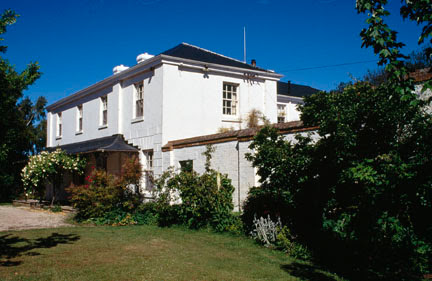 |  |
- The brother had earlier died on board, before the ship reached Mauritius.
- The two sisters, Helen Norris Hazlewood and Mrs Emily Mountford (born 1799), perished along with most of the passengers and crew.
- Mrs Mountford was the widow of Captain Francis Mountford (1790-1824) Assistant Surveyor General for India with the East India Company.
- The name Mountford was subsequently used by GP Ball for his seat at Longford and as a middle name for several of his children, in honour of the widowed sister in law who was on her way to join the family in Tasmania.
 |  |
 |  |
- He seems to have arrived for the first time on the barque 'Lonach' in January 1835 accompanied by a daughter Charlotte and a son Charles and possibly another son. His wife had died on the voyage.
- Colonel Hazlewood was involved in the importation of merino sheep to India from Macarthur's flock and was a pioneer in India in that respect. In 1840 he visited Western Australia where he put forward a proposal to solve the skilled labour shortage there by importing anglo-indian orphans from Madras who had been educated in trades by the East India Company, and apparently were in large supply. The British colonial authorities however disallowed the scheme.
- GP Ball's eldest daughter Adelaide Mary Jane Ball married John Sargent Turner the son of the Rev Nathaniel Turner at Sydney in August 1855 and they settled at Brisbane where John Sargent became a wealthy businessman.
- GP Ball later had business failures and he left Tasmania in the 1840s after suffering in the depression and prospered for a time in Victoria. He returned to England in the early 1850s to raise funds but soon ran into further financial strife and his properties were seized by his creditors.
- By 1855 he had moved to the USA and made a statement for a legal action from New York. He died in Florida in 1878 and seems to have never returned to Australia.

Strawberry Farm
- The family yesterday announced an $800,000 investment that will see it produce strawberries for US-based berry processor Driscoll.
- Mr Mackinnon said the former wool and beef property began to diversify in the late 1980s into peas, poppies, potatoes, onions, prime lambs, wool and sometimes beef.
- "The family farm diversified with about 400 hectares under irrigation, [with] centre pivots into those crops now being run by [sons] Charlie and Roly,'' Mr Mackinnon said.
- "That is a series of planned operations under the farm plan that has been running for 10-15 years and the horticultural berry diversification ties in well with that.
- "But the diversification through the proposed strawberry farm - starting at four hectares, but with the capacity to increase up to 10 hectares or more - has been made substantially easier for us because of the $400,000 grant and we're really grateful for that."
Mountford Granary Art School was established by well known artist Tony Smibert and his cousin Anne Mackinnon on the Mackinnon property, Mountford.
Mountford Granary provides farm-stay accommodation for art lovers in Tasmania’s northern town of Longford.
- The Jolly Painter Accommodation at Mountford Granary Studio can be hired by arrangement. The delightful studio has beautiful pastoral views, is heritage registered, and enjoys a panoramic view of the homestead and Great Western Tiers.
- Tasmanian Heritage Register Place ID #5063
- Back to Contents
Federation Style Tasmanian Heritage Homes
5. Penghana, Queenstown, TAS, Australia
|
 |
| Sticht in his library at Penghana, Queenstown |
Penghana comprises an impressive house and grounds, dramatically situated overlooking Queenstown, on the west coast of Tasmania.
 |
| Photograph - Penghana, Queenstown - winter |
- This splendid Federation-style house dates from 1898 and was once the home of Robert Sticht, the first mine manager of the Mount Lyell Mining and Railway Company.
- Robert Sticht developed the company into Tasmania’s largest industrial enterprise of the early twentieth century.
- Now operating as a bed and breakfast, the gardens are still open to the public.
- The name ‘Penghana’ attracted photographer Martin Walch as it was taken from the early shanty settlement a kilometre or two from the formal ‘company’ town of Queenstown.
- Penghana means ‘where two rivers meet’ in the local Aborigine language, and perhaps coincidentally, minus the ‘h’, it means ‘the head of the river’ in Welsh – how many Welsh miners were among the early pioneers of Tasmania’s west coast?
- The mining company’s general manager, Robert Sticht, an American of Scandinavian/German descent, used the house, now owned by the National Trust and operated as a guest house, to impose authority over his developing dominion.

- Ironically that same attic boardwalk also provided Sticht with the means to monitor both the mine and the town centre through strategically located windows. The image of Sticht and his servants negotiating the attic – small of scale, low ceilinged and rather dark – for their respective roles is almost amusing.
- In his efforts to establish himself as a cultured man and community leader, Sticht aspired to the trappings of sophistication. During his 25-year tenure, Sticht developed a significant collection comprising several thousand objects: artworks, books and manuscripts, artefacts and specimens; things to excite interest, learning and amusement.
A large Edwardian building being the managers residence of the Mount Lyell Mining Company.
- Built about 1895, the siting of the house atop a hill at the axial end of the main street exemplifies the social position of the incumbant resident.
- Complemented by a fine garden the house and its topographic location are essential features of the townscape of Queenstown.
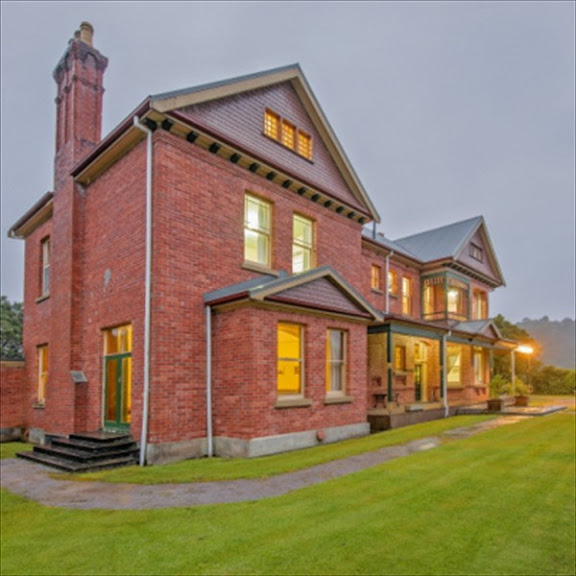 |  |
 |  |
 |  |
projecting gables over bay windows.
- Timber shingle infill to gable ends with attic windows. Return verandah with timber columns. Good interiors.
- Fine garden established 1900-all soil brought up to top of hill which was levelled for house.
- Penghana would be home to 10 or 11 general managers at the iconic mine, until 1994 when it was given to the people of Queenstown by the company. Penghana was handed over to the National Trust in 1995.
- Steve Berndt and Karen Nixon are the fourth owners of the bed and breakfast business and arrived in November to take over after leaving the warmer climate of the Tweed Valley in northern New South Wales.
- Tasmanian Heritage Register Place ID #5182
- Read more: http://www.penghana.com.au/; - Back to Contents
6. Home Hill, 77 Middle Rd, Devonport, TAS, Australia
1916 family homestead and gardens of an Australian Prime Minster. Home Hill is a look into the family life of Tasmania's only Prime Minister.
- Home Hill was the family home of Australian Prime Minister Joseph Lyons, his wife Dame Enid Lyons – the first woman elected to Australia’s federal parliament – and their 12 children.

Home Hill, Devonport
- This fascinating timber house was home to Prime Minister Joseph Lyons and Dame Enid Lyons together with their 12 children.
- Built by them in 1916 Home Hill was the heart of the family’s life although politics meant parents and children were often separated. The rich collection of personal material provides an unexpected insight into Australian political life and international relations during the momentous events of the mid twentieth century.
- A single storey timber house in excellent condition built about 1910. The house is complemented by extensive landscaped grounds. It was the home of the late Prime Minister of Australia, The Hon J Lyons.
 |  |
| Alderman Laycock said she would present Mr Turnbull with a book on Home Hill today in a bid to get him interested in the site. Alderman Laycock said plans for a Home Hill interpretative centre would require funding to proceed. | Manager Ann Teesdale (left) and Devonport Alderman Lynn Laycock talk about the council signing a three-year deal with the National Trust to manage Home Hill. |
Bid for Home Hill funds
Oct. 28, 2015, 10:13 p.m"Both Joseph and Enid Lyons did radio broadcasting from Home Hill and to have an interpretative centre to showcase the material we have would be fantastic. It would help the general public to understand the political system."
- Alderman Laycock lobbied for and received $450,000 from the state government when she was mayor to install security at Home Hill and provide a humidifier and better car parking and lighting..
- This week the council agreed to enter a three-year partnership agreement and support a strategic plan with National Trust Australia (Tasmania) which includes an annual cash contribution to the Trust of $28,000 to ensure the ongoing operations at Home Hill."
- After her husband's death in 1939, Dame Enid stayed living at Home Hill until she died in 1981.
- The council assumed ownership of the buildings and grounds in 1977.
- In 1983, council handed over responsibility of the contents of Home Hill to the National Trust.
- The council is responsible for the maintenance and development of the buildings, gardens and grounds at Home Hill.
- The property is open to the public 10 months of the year and provides a range of community events including high tea, weddings and special functions.
 |
| Home Hill High Tea on its 100th Anniversary |
Dame Enid’s style is evident throughout the house, filled with a rich collection of mementoes, and beautiful garden.
- Gain an unexpected insight into the the political and personal lives of two people who dedicated their lives to public service and their family, with one of the regular guided tours.
- Home Hill is situated only 5 minutes’ drive from either the centre of Devonport or the Spirit of Tasmania dock and is available for hire for private events and weddings.
- Tasmanian Heritage Register Place ID #1310
Read more about Home Hill, Devonport; Read about Joe Lyons Cottage, the birthplace and childhood home of Joseph Lyons
- Back to Contents
7. Fairlawn, 136-138 Elphin Rd, East Launceston, TAS, Australia
Fairlawn is significant as a house, complete with contents, in a garden setting, which provides a comprehensive document of domestic and social life of a substantial middle class family in early twentieth century Launceston.- The house is a noteworthy example of the Queen Anne style of architecture, with an elaborate exterior generally characteristic of the style, and a particularly rich interior design. Tasmanian houses of such quality were rare in the Federation period.
- The house complete with the decorative treatments of its rooms, their furnishings and fittings is indicative of the style and taste of the Federation years.
- The personal possessions of the Sutton family, room plan (often with the original room function retained) and ephemera of domestic living provide a tangible illustration of family life and domestic arrangements in the period.
 |
| Fairlawn |
The house has important historical associations as the family home of the Suttons, a prominent Launceston family. The family has maintained the house sympathetically and it still contains in its fabric much information on domestic technology of the early twentieth century, including the social attitudes to these matters.
- The house also contains a small collection of local memorabilia and artefacts, illustrating contemporary social perceptions of the locality and its historic interest.
- The garden is historically significant for demonstrating a late nineteenth century Victorian period Villa garden and is aesthetically significant for its high quality of design. The garden at Fairlawn is worthy of separate recognition.
Fairlawn is a single-storey Federation Queen Anne style house set in extensive gardens, an integral part of the whole property design. The house is built of brick, dichromatic in style with red bricks and white brick detailing, the whole tuck pointed.
- There is a wooden floored front porch and verandah round two sides set on stone footings. The red corrugated iron roof has tall square chimneys and flying gables with timber detailing set over square bay windows. The house was one of the earliest to be electrically wired and retains almost all its original fittings.
- The house plan includes eight bedrooms, including two for servants, a library, breakfast room, dining room and drawing room. Much of the original room plan, room arrangements and room usage remains intact. The interior of the house retains much of the original decorative treatments, furniture, fittings, domestic technology, family ephemera and personal possessions.
- Alterations from the 1930s have done little to detract from the integrity of the whole and some later additions, such as a 1939 kitchen and 1940 bathroom, are period pieces in themselves illustrating changing family needs and values. In addition to domestic items the house contains a small private collection of local memorabilia and artefacts.
The house was built in 1900 when Elphin Road was emerging as Launceston's most desirable suburb. The house may have been designed by Harold Masters and was built by Launceston's largest building firm, J and T Gunn for Launceston residents Samuel J Sutton and his wife Emma.
- Sutton, a baker and confectioner by trade, was already a prominent citizen, a member of the House of Assembly and twice Mayor of Launceston. A Victorian progressive, he was the enthusiastic instigator of the Launceston International Exhibition of 1891 and the erection of the Launceston Albert Hall.
- The Queen Victoria Museum was also built during Sutton's term as Mayor. In 1895, after lobbying by Sutton, Launceston became the first Australian city to be lit by hydro-electricity. Emma Sutton was also active in local affairs, being instrumental in the setting up of the Queen Victoria Hospital. Fairlawn was Samuel Sutton's home until he died in 1906. His wife and daughter continued in residence until their deaths. His daughter, Marjorie, the last family member, died in Launceston in 1989.
- Tasmanian Heritage Register Place ID #4182
- Read more about Samuel Sutton
8. Winmarleigh, 55-57 Morris Av, Taroona, TAS, Australia
- Listed on the Register of the National Estate
- Apr 14, 2014 - Recently sold - view listing
Winmarleigh is prestige heritage listed property at its finest. Established in 1893, the grand sandstone residence is the centrepiece of a title that stretches across 6396 m2 of prime southern Tasmanian real estate.

- Outstanding late Victorian/Federation style house in excellent condition, retaining internal as well as external details. Grounds now subdivided, but house retains significant landscape setting, including carriageway.
- Presenting unobstructed water views and sprawling grounds, the secluded property has been beautifully maintained and restored, evident in the grandeur of internal and external detailing and craftsmanship rarely seen in a private residence.
- Sir John Demetrius Morris (1902-1956), judge and university chancellor, was educated at St Patrick's College, East Melbourne, and the University of Melbourne (B.A., 1924; LL.B., 1925; M.A., 1926), he was admitted to the Victorian Bar on 7 November 1927.
- At St Dominic's Catholic Church, East Camberwell, on 28 May 1930 he married Mary Louisa McDermott, a 29-year-old clerk. They moved to Hobart where he was admitted to the Tasmanian Bar on 24 October. He joined the firm of A. G. Ogilvie which became Ogilvie, McKenna & Morris in 1931.
- Morris's career and prospects were transformed when Edmund Dwyer-Gray, the Labor premier, raised him to the Supreme Court bench in July as acting chief justice. His appointment was confirmed by (Sir) Robert Cosgrove in April 1940. Socially established (which pleased him and his wife greatly), he bought the spacious home, Winmarleigh, at Taroona, and loved to entertain.

- This is the first time the property has been on the market since 1939 when it was purchased by the Chief Justice. The residence has evolved during this time to incorporate functional modern living, however its core heritage values continue to dominate and impress.

Winmarleigh property highlights:
- Large land allotment of 6396 m2 including sandstone residence with elaborate timber decoration, slate roof, articulated verandah, vast garden and lawns, computerised automated watering system, double carport, security gates and natural screening from neighbouring properties and the passing Channel Highway.
- Spacious design and layout including 5 bedrooms, 2 bathrooms, dining hall, formal lounge, study/library, kitchen, entrance hall and sitting room with option of electric heating or original fireplaces (8 in total)
- Single storey stone house U-shaped plan with verandah on three sides. Projecting bays symetrically placed about a central entrance to a large T-shaped hall, elaborative paved with terra-cotta tiles. Splendid internal details: elaborate six pane doors with architraves wood with timber grain finish. Cornice in original colours. Timber verandah intact. Plans with owner. Builder Stabb Bros., for H.W.
- Tasmanian Heritage Register Place ID #3633
- Back to Contents
9. Arcoona, 13 East Barrack Street, Deloraine, TAS, Australia
- Listed on the Register of the National Estate
- Offered for Sale in 2015 (Mar 16, 2015 - offered $1,800,000)
 |
| Arcoona, East Barrack St, Deloraine, TAS |
- A large rambling two storey and one storey Federation style brick mansion built around initially a central courtyard but converted to a ballroom two years after initial construction.
- The house has a variety of gabled projections each with ornate decorative fretwork barge boards. Original billiard room with clerestorey lantern window, and excellent stained glass bay window. House interior is original, even to curtains and books.
- Now privately owned and restored, Arcoona features extensive gardens on approximately three acres (1.2ha) of grounds with a croquet lawn.
- Inside, the restoration has extended to the custom-made chandeliers, the original stained glass windows and the intricate cathedral timber ceilings.
- With seven bedrooms and six bathrooms, the 13 East Barrack Street property, was listed for more than $2.5 million.
- Arcoona, which has been fully refurbished, has an understated elegance and remains faithful to its purpose as a warm family home.
 |
| Arcoona from http://www.domain.com.au/ |
- The town grew to encompass the nearby Alveston, now a historic area beside Arcoona on the southern bank of the Meander River.
- There, from the early 1850s, remain the original brick and timber Georgian shops and cottages.
|
| ||||
 |  |
"Arcoona" has had an interesting history since it was built in 1892 for Dr and Mrs Frank Cole who designed it as a family home for their four children and for their servants.
- The history of the house was written by Geoff Woods and released for its centenary last year:
- "Arcoona, Deloraine : a country doctor's residence / Geoff Woods- Woods, Geoff [ Book : 1991]
- Dr Cole died in 1931 and the family moved away in 1936.
- The building was used for a year or so as a guest house and then it was leased as the Deloraine Hospital for about 30 years, most of that lime run by Sister Nell Brennan.
- It was used as a home for the aged for a couple of years, rented by the High School for art and typing classes and then was empty for a couple of years.
- Geoff and Pal Woods bought the house in 1973 and have since renovated it and made it their family home for the last 20 years.
- Over the last 6 months "Arcoona" has also been the home of Western Tiers Tours but soon this will move with Geoff and Pat.
- Tasmanian Heritage Register Place ID #4779
- Read more: The Australian: Deloraine, Tasmania: Arcoona manor may fetch $2.5m (APRIL 18, 2015 12:00AM);- Back to Contents
10. Ormiston, 1 Esplanade, Strahan, TAS, Australia
- NOT Listed on the Register of the National Estate

Ormiston House as it was around 1905 with the Henry family in a typical pose for photography.

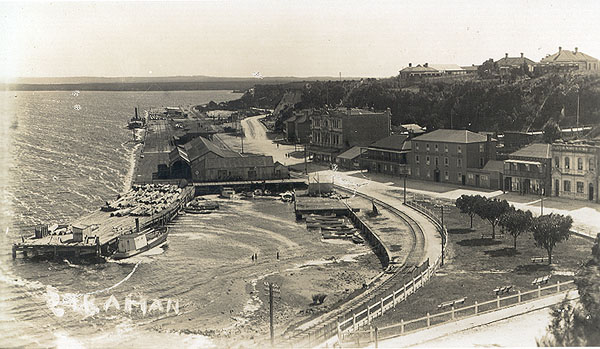 |
| Undated postcard of Strahan (Tasmaniana Library, SLT) |
Strahan, situated near the entrance to Macquarie Harbour, was founded in 1880 and largely established by Frederick Henry, owner of the historic homestead Orminston. It developed as a port to cater for the needs of the early inland mining fields of the west coast as well as the timber getters, particularly huon piners.
- Following the sale of his Mt Lyell shares in 1897, Frederick Ormiston Henry set about building a fine mansion. A mansion that today is regarded as one of Australia's finest examples of Federation architecture.
- Land was selected on the Esplanade at West Strahan that by the turn of the century had established itself as the beach and picnic area for the community. On the 5th of June 1899 F. O.. signed a contract with William McDonald, a builder, to build a fine home to the design of architects A & S Luttrell.
- The contract stated that the completion date was to be the 16th of November 1899 and that the builder was under a penalty of £5.0.0 for every week delay after that date. We believe that no penalty was paid and the house was ready for occupancy by the allocated time.
 This fine stately home is virtually the same as when it was built. A sturdy structure of brick which cost the princely sum of £1310.00, in those days a sizeable amount of money and one would think that F. O. had some change left over from the sale of his shares to furnish the house in grand style.
This fine stately home is virtually the same as when it was built. A sturdy structure of brick which cost the princely sum of £1310.00, in those days a sizeable amount of money and one would think that F. O. had some change left over from the sale of his shares to furnish the house in grand style.- Today guests can relive the grandeur of a bygone era. Peruse the history gallery or take a peek at Macquarie harbour from the ornate tower and enjoy the attic history room.
- One visitor remarked that they thought the roofline resembled the Royal Palace of Tonga. Had F. O. been influenced during his time in Fiji by the palace and modelled the tower on the palace in Tonga?
- There is no doubt that the Tower and Widows Walk had a practical purpose, that being for F. O. to observe his vessels plying the harbour. The children were only to be accompanied by adults in the early days and it could have been that F. O.'s office was under the tower in the Baltic pine room in the attic. The perfect spot for writing with easy access to the tower, and perchance, a smoke and a pinch of snuff.

- The wrought iron lacework with squared huon pine posts.
- The straight roofed veranda instead of the colonial bull nose.
- The large bay windows, and above, the gables of durable Tasmanian timbers in the design of the rising sun.
- Strahan is protected by a Heritage Town Plan and as such all buildings of an historic nature must represent true heritage colours and themes.
- It is perhaps unfortunate, but a reality of life, that so much of the original land that accompanied the house has been subdivided and sold. Originally there were over five acres of land with Ormiston House, today there are 1.4 acres and landscaping is virtually complete.
- Tasmanian Heritage Register Place ID #5651
- Read More on Ormiston House History
- - Back to Contents
Historic Houses of Tasmania
![Photograph - Side frontal view of Westella on Elizabeth St [ADRI: PH30-1-2992] Photograph - Side frontal view of Westella on Elizabeth St [ADRI: PH30-1-2992]](https://blogger.googleusercontent.com/img/b/R29vZ2xl/AVvXsEgUeZipV9Ovqa3r0ZwHFif4m-oxVDjt_qlsmLwITRfhjZHNJ4CygMVXnFAd-D2iwe4hMxcyUm0b1p9p1fw-SY5Hh32GXKi5BsvVTPrprZ9j8vMuG-V3TPPBfRPK8TFontDd8aThPK89QFwO/s912-Ic42/Westella+PH30_1_2992.jpg)


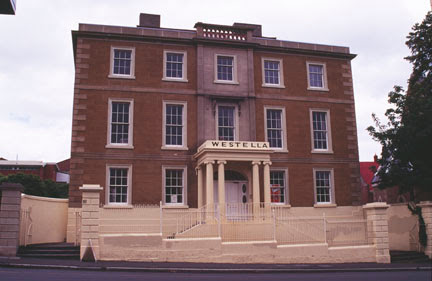




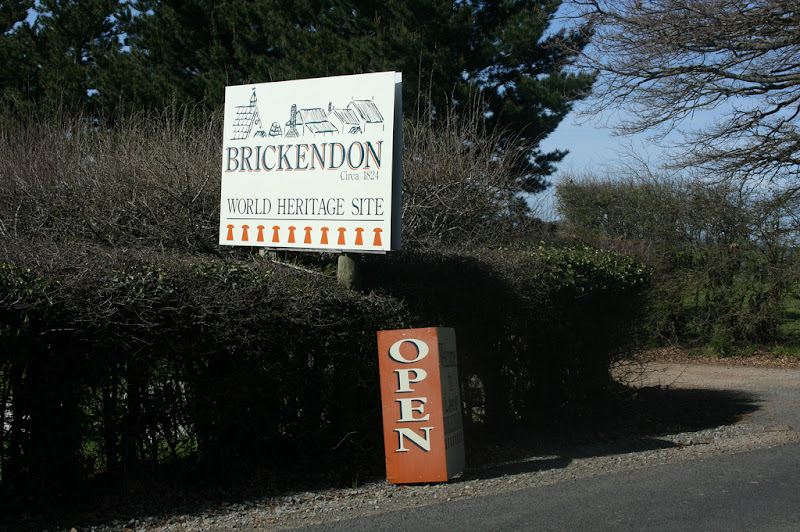
















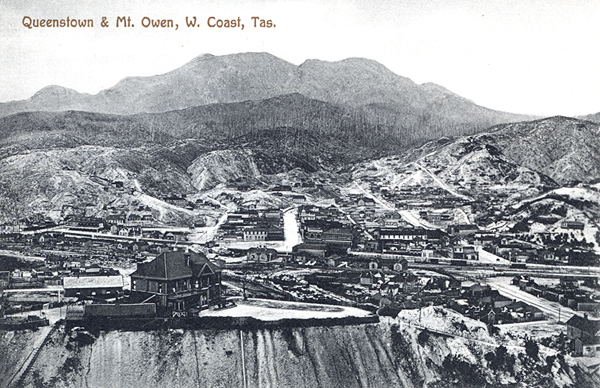


Thanks a lot for sharing this amazing knowledge with us. This site is fantastic. I always find great knowledge from it.
ReplyDeleteCampervan Hire Tasmania
ReplyDeleteThank you for sharing such great information.
It has help me in finding out more detail about portico bed sheets online sale
Upgrade your property with a roof that offers strength and style. Our expert Colorbond Roofing Adelaide services ensure lasting performance in all weather conditions.
ReplyDelete